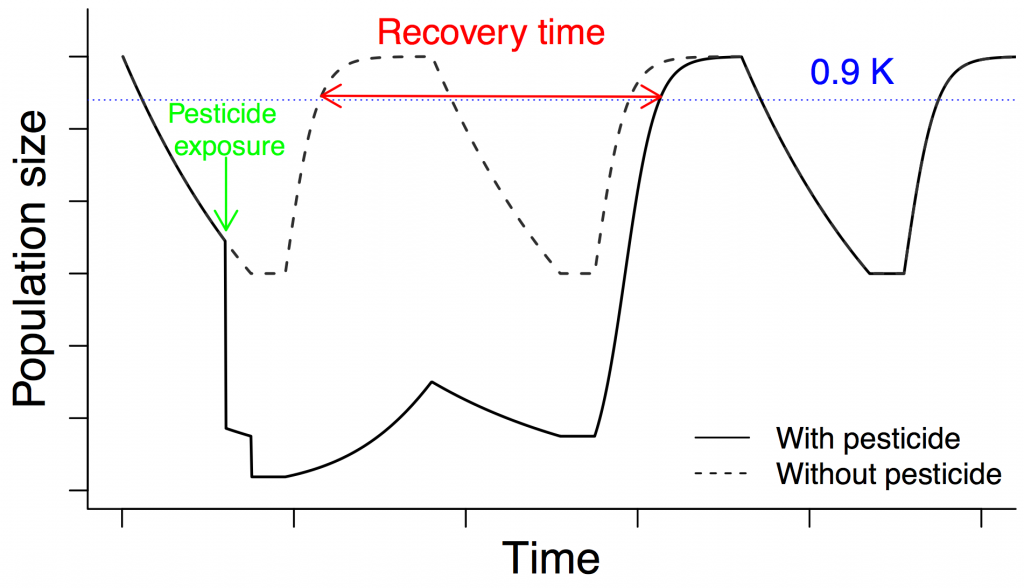In this post, Ralf Schäfer talks about their recently published paper “Assessing recovery of stream insects from pesticides using a two-patch metapopulation model”.
Pesticides are widely applied in conventional agriculture. Subsequently, parts of the applied amounts are often translocated into neighbouring environments such as streams. Several studies found that pesticide runoff from agricultural areas can affect local stream invertebrate communities, which contribute to important ecosystem services. These effects can range from reductions of growth (sublethal effects) to immediate mortality (lethal effects). Pesticide risk management aims at avoiding unacceptable effects of pesticide use. Transient effects, i.e. if recovery occurs under experimental conditions, are typically regarded as acceptable.
In our study, we investigated how different scenarios of sublethal and lethal effects influence the recovery time of a sensitive model invertebrate population. Importantly, populations are not isolated but often connected in the real world (so-called meta-populations) and we also studied how effects in a polluted patch affect non-polluted upstream populations using a meta-population model.

Schematic display of pesticide effect on an invertebrate population in an ecological model (graphic by R. B. Schäfer)
We found that populations connected through migration are buffered against extinction from pesticide effects. However, migration had ambivalent effects: it lead overall to slightly faster recovery of the polluted population, but also to a carryover of the pesticide effect from the polluted downstream to the non-polluted upstream population. Our study highlights the important role of the landscape context for pesticide effects, where migration can buffer against effects, but also carries effects over to non-polluted patches.
The paper authored by Ralf B. Schäfer, Bernhard Kühn, Larissa Hauer and Mira Kattwinkel was published in Science of the Total Environment. The paper is freely downloadable until mid-September and the computer code is accessible via github.
